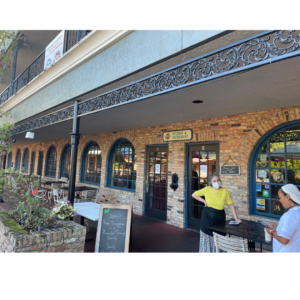
According to the National Restaurant Association, more than eight million restaurant employees were laid off or furloughed since the start of the pandemic in March 2020.
The nation’s restaurant’s experienced a loss of $280 billion in sales during the first 13 months of the pandemic, according to the trade association.
In the wake of returning to normalcy, restaurants have still been challenged since hiring began early September 2020. Many simply can’t find enough workers to operate as they once did.
The controversial debate on restaurant employees’ reluctance to return to their jobs is now shifting. The idea that citizens would rather stay home and collect benefits than to return to the industry became a faded fantasy once federal lending supported that idea, by ending pandemic unemployment assistance in September 2021. Florida and a handful of other state’s stopped accepting federal unemployment payments in June.

While many economists and business owners expected the demand to return once hiring was initiated, the National Restaurant Association conducted a survey last month that found that 78% of operators said their staffing “wasn’t sufficient enough” to support the demand of customers despite hiring efforts.
The Florida Restaurant and Lodging Association told Tampa Bay ABC Action News that the service industry is experiencing obstacles beyond staffing shortages.
“I think it may take a while,” FRLA’s Senior Vice President Peter Kilgore said. “But, as we say in our campaign, together we’ll get through this. And it’s patience and understanding and empathy. That’s what it takes.”
Supply shortages and inflation, minimum wage increases and climbing labor costs are some of the many hardships hitting the restaurant industry.
“The staffing shortage is being felt on all ends,” Cassidy Mccreery, a front house manager at Sage Restaurant in Tallahassee, said. “We’re realizing front house employees are slightly easier to secure rather than back house chefs but it remains a struggle. Local farms and distributors have been suffering with supply, which adds to our issue of keeping up with customer demand.”
Sage announced last month is was discontinuing its Sunday brunch, citing labor and supply shortages.
Popular distribution companies like Chaeney Brothers, among other companies in the supply chain of many local restaurants, have been impacted by disruptions in supply since the middle of the pandemic.
“This creates an even more complex situation for management,” Mccreery said.

Many restaurant owners are remaining optimistic as the holiday season approaches. They said they are expanding hiring efforts.
Operators are still exploring why this is still an obstacle for this industry’s management.
Little Italy Restaurant owner Vjollca says most of her staff are college students.
“We’re doing good right now but we need about three more servers for the upcoming holiday season,” the local owner said. “The servers I have now are great, but students in the past have been hired, they work and then leave. I only have two employees who have worked for me for a while, one of them over 13 years.”